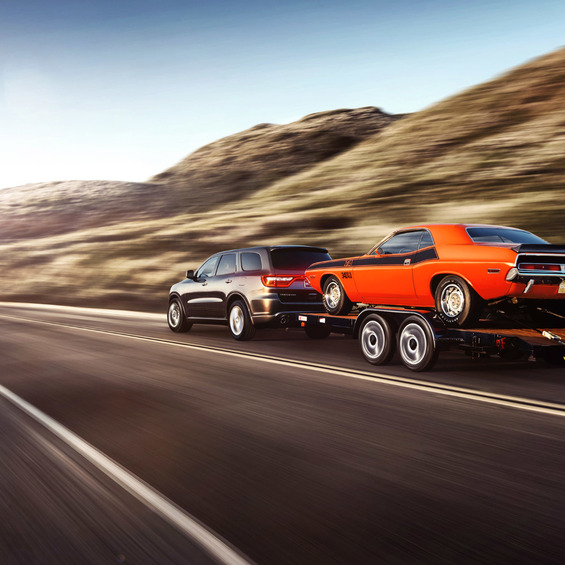
Preparations for the visit
A number of steps should be taken before traveling on a motor vehicle with a trailer. First, inspect the technical condition of the trailer and pay particular attention to the coupling. It shall consist of a lock which shall be securely locked and the ball of the coupling device. The farkop has to handle a graphite grease that reduces friction. Then check the condition of wheel bearings, tyre pressure and shock absorbers.
An important element is the securing of cargo. Before loading, the driver shall assess the extent to which the chain tethers are attached to the trailer.
unloading the trailer
After careful examination, it is possible to proceed to the loading. There are a number of features here, too. The items should be arranged in such a way as to be as low as possible and closer to the centre of the trailer.
Breath of the trailer shall not put pressure on the lamp with an effort greater than 50 kilograms
We don't need to overburden the stern-it's better to move the load a little forward. Otherwise, the trailer will lift the rear of the vehicle, thus overloading the front suspension and reducing the effectiveness of the rear brakes. And when the front of the trailer is overloaded, the front of the vehicle is raised and the front of the vehicle is reduced, in the event that the front wheel is not driven by the front wheel, even on the asphalt. But the main loading condition-the caravan was not forced to put pressure on the lamp with an effort greater than 50 kg.
Trailer car management considerations
The management of a motor vehicle with a trailer has fundamental differences. It is obvious that the trailer will lengthen the managed vehicle almost twice and make it much heavier. This is reflected as follows: a motor vehicle with a trailer is slower to gain speed (due to mass) and requires a large distance to disperse and, respectively, the brakes.
Only direct and well-viewed sections of the road should be selected for the rebuild
The trailer limits considerably the manoeuvrability of the car-only direct and well-viewed sections of the road should be chosen for the rebuild. The construction itself must be very smooth; otherwise, the trailer starts rocking to the left and will lose stability.
Particular attention should be paid to air flows: consider the situation when a large truck is passing by a trailer. How does it affect the trailer? First, the resulting air flow will put the trailer aside, and then, on the contrary, take it. In this situation, it is best to move to the right and to miss the truck, or if possible, at all, until a full stop.

Another difference is that the trailer increases the width of the vehicle's overall corridor. At the same time, the greater the distance of the axis of the trailer to the farcopes, the more space is required for that vehicle for rotation. This should be borne in mind not only by the driver himself, but also by other road users.
One of the most common mistakes of the drivers of a vehicle with a trailer is braking
One of the most common mistakes of the drivers of a vehicle with a trailer is braking at a turn that can cause the trailer to damage the vehicle. In the first place, it is necessary to leave a large side interval, and second, it is necessary to pass at a stable speed, not to be stuck and not to gasow. A gas pedal can help if the driver has not managed to avoid the trailer swinging. In this case, the smooth acceleration will allow it to stabilize.
In a situation where the motorist is required to turn back with the trailer, the rear-view mirrors should be controlled all the time. If the driver notices in the mirrors that the trailer starts to "fold" (not arbitrarily turn), the first gear should be included and a little ahead of the road, thus aligning it. Backward movement is subject to one principle: when a motor vehicle moves rearward, the vehicle repeats the trajectory of the trailer.
Maximum speed of motor vehicle with trailer for traffic regulations is limited to 70 km/h
In conclusion, let us recall that drivers with category "B", "C" or "D" may operate the light trailer. In this case, the permissible mass of the trailer shall not exceed the mass of the vehicle in running order and the sum of these masses shall not exceed 3.5 tonnes. The maximum speed of a motor vehicle with a trailer for road traffic is limited to 70 km/h. The trailer shall be equipped with light-signalling devices-position lights, turning signals and stop lamps. It is necessary to have additional equipment-wedges for installation under the wheels in the case of a tilt parking, as well as extended rear-view mirrors if the overall dimensions of the trailer exceed the width of the towing vehicle (s). It is also the duty of the driver to remember that, because of the trailer, the managed vehicle is almost twice as long as it becomes heavier.







